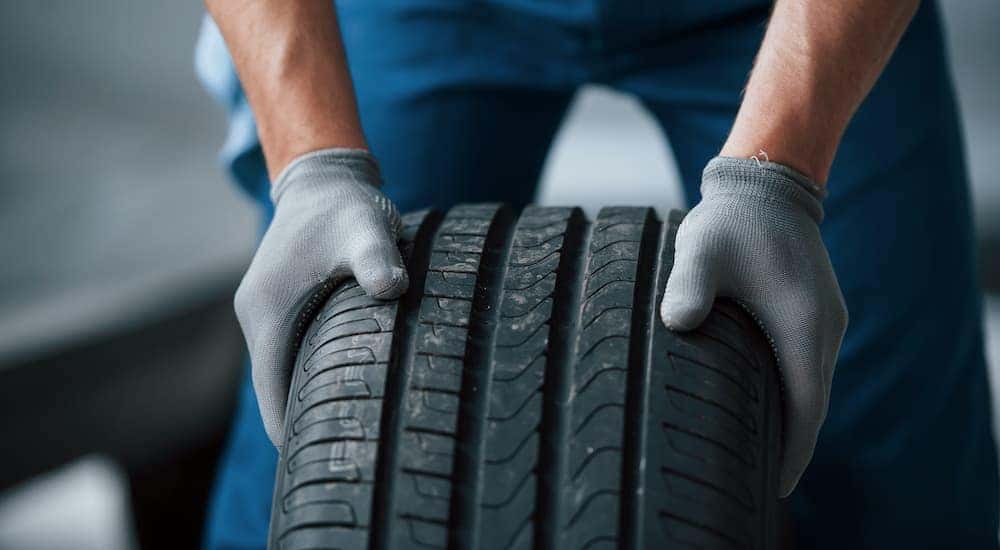Tire Repair Work Myths Debunked: Separating Truth From Fiction
In the world of vehicle maintenance, tire repair work holds a significant area, yet it is frequently shrouded in myths and misunderstandings that can lead to complication for lorry owners (morris tire service). From the mistaken beliefs surrounding patching versus plugging a pierced tire to the efficiency of various tire sealers, there are several vital areas where quality is needed to make informed choices.
Common Tire Fixing Misconceptions
Resolving prevalent false impressions surrounding tire fixing is important for keeping roadway safety and prolonging the long life of your vehicle's tires. It is vital to recognize that not all punctures are produced equivalent; while some might indeed need a tire substitute, the bulk can be securely fixed.
An additional misunderstanding is the concept that a DIY tire repair set is an adequate remedy for all tire issues. While these kits can be helpful for temporary solutions in emergency situations, they are not a permanent remedy and might not resolve the underlying problem (discount tires morris il). Seeking the experience of a certified tire specialist is always recommended to ensure the safety and stability of the tire

Can You Repair a Punctured Tire?
Repairing a punctured tire is a typical method in the auto sector, frequently accomplished by specialist technicians following particular guidelines and requirements. Not all leaks can be repaired. The place, dimension, and intensity of the leak are crucial consider establishing if a tire is repairable. Slits situated on the step location of the tire are usually repairable as lengthy as they are within a particular dimension restriction and do not influence the tire's architectural honesty.
It is very important to note that punctures near the sidewall or shoulder of the tire are usually not repairable as a result of safety and security problems. Such locations go through substantial special info tension and flexing, making repairs unreliable and possibly hazardous. Furthermore, if the puncture is also big, surpassing the suggested repairable size, or if the tire reveals indications of internal damages, it is much safer to replace the tire completely.
The Fact Regarding Patching Vs. Connecting
When considering the repair of a punctured tire, comprehending the differences between patching and plugging is crucial for making informed decisions concerning tire upkeep and safety and security. Covering entails fixing the tire from the within, where a spot is used to cover the slit.
Misconception: All Tire Sealants Are Efficient

When selecting a tire sealant, think about variables such as the size of punctures it can successfully fix, compatibility go to the website with tire stress monitoring systems (TPMS), and whether it is safe for the tire product. Bear in mind, while tire sealers can be advantageous in emergencies, they are not an alternative for correct tire treatment and upkeep.
Best Practices for Handling Flat Tires
Because of the differing efficiency of tire sealers, recognizing ideal practices for handling punctures is critical for keeping roadway safety and security and vehicle performance. When encountering a puncture, the primary step is to safely pull over to the side of the road, away from oncoming traffic. Switch on hazard lights to notify other chauffeurs of your circumstance. It is suggested to apply the emergency brake and location wheel wedges under the tires to avoid the car from rolling. Next, consult your vehicle's manual to locate the extra tire, jack, and lug wrench. Prior to trying to alter the tire, guarantee that the area is flat and stable. Loosen up the lug nuts, elevate the automobile with the jack, remove the lug nuts and puncture, and change it with the extra tire. Tighten the lug nuts in a star pattern, reduced the automobile, and safely tighten the lug nuts. Stow away the flat tire, devices, and devices, and remember to examine the spare tire's pressure occasionally. Complying Home Page with these best methods can help you take care of blowouts efficiently and safely.
Conclusion
In verdict, it is crucial to separate reality from fiction when it concerns tire fixing misconceptions. Recognizing the reality regarding covering vs. plugging, the efficiency of tire sealants, and ideal practices for dealing with punctures can help guarantee the safety and security and longevity of your tires. By disproving typical misconceptions and following appropriate repair guidelines, you can make enlightened choices when it comes to preserving the health and wellness of your lorry's tires.